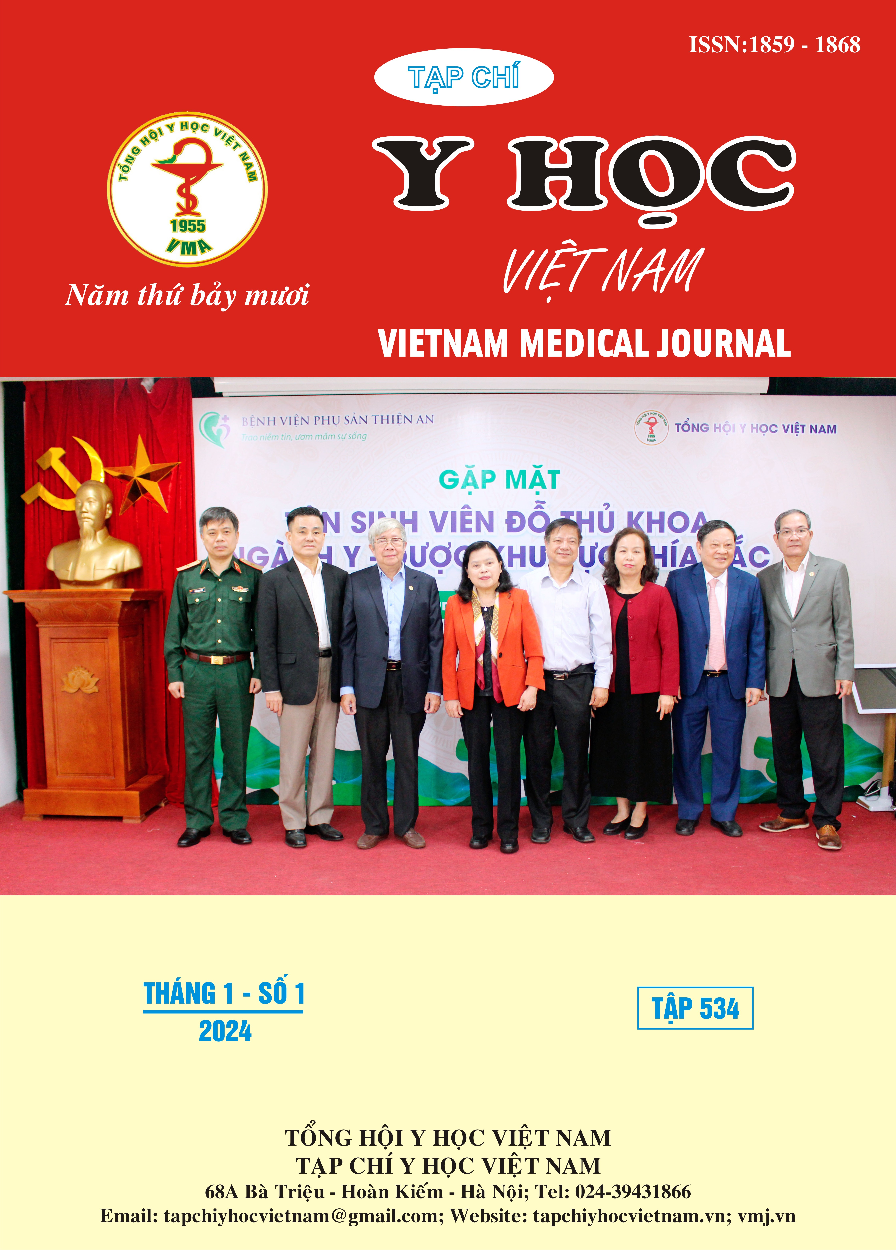OUTCOMES OF CHRONIC SUBDURAL HEMATOMA TREATMENT IN THE ELDERLY AT THAI BINH GENERAL HOSPITAL
Main Article Content
Abstract
Objective: To assess the outcomes of chronic subdural hematoma treatment in the elderly at Thai Binh general hospital. Methods: A descriptive cross-sectional study was conducted among 75 elderly patients with chronic subdural hematoma treated at Thai Binh General Hospital from April 2021 to December 2022. Results: 75 patients including 58 males (77.3%), 17 females (22.7%); Average age was 73.77 ± 8.88 years old (from 60 to 96); The most common age group was (70-79) accounted for 41.3%. The most common cause was trauma (76%), not remembering head injury (24%). Traumatic brain injury due to falls was (64%). Mild traumatic brain injury (GCS score was 13-15) constituted 93.3%; moderate (GCS 9-12) added up to 6.7%. CT scan demonstrated that average hematoma thickness was 19.39 ± 7.01mm, midline shift was 6.42 ± 6.00mm; There were 26 patients with bilateral chronic subdural hematoma made up (34.7%). Most chronic subdural hematoma patients were operated by single burr-hole craniostomy; 26 patients with bilateral chronic subdural hematoma had bilateral drainage. Most patients were reported with recovery from decreased consciousness and paralysis; However, there were still sequelae of mild headaches, insomnia and incomplete paralysis. There were no deaths. Conclusion: Chronic subdural hematoma in the elderly is common in males, the most common cause is falls, most of them admitted to the hospital with good mental status. Single-hole craniotomy to drain hematoma is a safe and effective method.
Article Details
References
2. Sheng-Yu Cheng, Cheng-Kuei Chang, Shiu-Jau Chen, Jui-Feng Lin, Cheng-Chia Tsai. Chronic Subdural Hematoma in Elderly Taiwan Patients: A Retrospective Analysis of 342 Surgical Cases. Int J Gerontol. 2014 Mar 1;8(1):37–41.
3. V. Adhiyaman, M. Asghar, K. N. Ganeshram, and B. K. Bhowmick, “Chronic subdural haematoma in the elderly,” Postgrad. Med. J., vol. 78, no. 916, pp. 71–75, Feb. 2002, doi: 10.1136/pmj.78.916.71.
4. Ngô Mạnh Hùng. Đặc điểm lâm sàng, cận lâm sàng và chẩn đoán hình ảnh bệnh nhân máu tụ dưới màng cứng mạn tính được điều trị phẫu thuật tại bệnh viện Việt Đức từ 2017-2018 [Internet]. [cited 2023 Sep 5]. Available from: https://tapchiyhocvietnam.vn/index.php/vmj/article/view/327/221
5. D. Kitya, M. Punchak, J. Abdelgadir, O. Obiga, D. Harborne, and M. M. Haglund, “Causes, clinical presentation, management, and outcomes of chronic subdural hematoma at Mbarara Regional Referral Hospital,” Neurosurg. Focus, vol. 45, no. 4, p. E7, Oct. 2018, doi: 10.3171/2018.7.FOCUS18253.
6. M. Rauhala et al., “Chronic subdural hematoma-incidence, complications, and financial impact,” Acta Neurochir. (Wien), vol. 162, no. 9, pp. 2033–2043, Sep. 2020, doi: 10.1007/s00701-020-04398-3.


